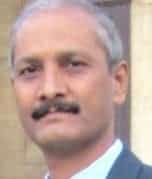
By K V Prasad
Of all the states that go to elect a new government early next year, Uttar Pradesh dominates the political space for two prominent reasons – with 403 seats and 80 in Lok Sabha holding a prime position in the Hindi-speaking belt of the country, is a bellwether state.
This position puts to shade the equally important states of Uttrakhand, Goa, Manipur and Punjab and barring the last state, the Bharatiya Janata Party has a government in each of the four states with high stakes in the upcoming elections. Voters can evaluate the work of a ‘double-engine’ government, a model the BJP stressed will change the way of administration.
Each state has its own dynamics and yet on UP rests the political oars of the party in governance on more than one count. The results of U P Assembly will strengthen the party that takes the pole position; it paves the way for the next big test of general elections due in summer of 2024; and the composition of the assembly can prove decisive in the 2022 presidential election as the state legislators have greater value of votes.
The BJP stakes remain the highest since the party swept the polls in 2017 riding the crest of a ‘Modi wave’. It is now preparing to do an encore based on the performance of the Yogi Adityanath government. The party is already in election mode and for the past six months stepped up engagement with the people of the state.
First, the party farmed out tasks across six regions to senior leaders and Union Ministers each of who are regularly touring the areas earmarked and then, over the past few weeks the party intensified and raised the campaign pitch with Prime Minister Narendra Modi holding frequent meetings and dedicating projects to the public.
Inauguration of the Kashi Vishwanath Temple Corridor project, in Prime Minister’s constituency and other public works like the expressways or houses for the poor are intended to convey sincerity of the party in delivering on promises of development for all.
The last time around, the BJP swung the pendulum with grandiose delivery on the Ujwala, free cooking gas connection and its field workers tapping every door to remind the beneficiaries of the work done by the Modi government and leaving them to imagine wonders that a ‘double –engine’ government can do.
Now since 2017 people have first-hand experience and there is little doubt that incumbent governments go into elections with a handicap of having to prove what it delivered. Such is the nature of politics that governments are answerable to people who seek to evaluate the ground covered in the backdrop of promises made in the run up to the previous elections.
In a way, anti-incumbency is a factor that is inevitable and gets accentuated in the aftermath caused by the brutal second wave of Covid health pandemic and UP like other parts had its share of deep distress on this count. Adding to its woes is that the scars of a year-long farmers’ agitation are fresh.
Over the last few years, the BJP demonstrated efficacy of its superb election machinery. From the top down to the booth level Karyakarta or Panna Pramukh, is a well-coordinated work. And then it has an army of silent and dedicated RSS workforce. Then in UP, the Home Minister Amit Shah had invested tremendous effort in creating a set up ahead of the 2014 general elections which over the last few elections proved its ability to provide the thrust required to convert electoral support into seats.
Now the moot question is will the BJP be able to effectively counter anti-incumbency and challenge from the Samajwadi Party. Visuals appearing in media suggest Akhilesh Yadav is drawing crowds and the party fancies itself not just as the principal challenger to the Yogi government but the only alternative.
The SP with its Yadav-Muslim support base also hopes to ride on the anger of the farmer community especially in the western part of the state, a region where it is poised to work with the Rashtriya Lok Dal of Jayant Choudhary, political heir of Chaudhary Charan Singh and Ajit Singh.
While the electorate would judge the government on work done, just as in other parts of the country, politics is driven by caste calculations. In UP the issue seeps further to sub-castes and over the years, major political parties attempt to sew up a larger coalition tapping into smaller reservoirs.
In the 2014 Lok Sabha elections, the BJP with Amit Shah as incharge of the state worked wonders with its tie-ups with smaller parties representing various castes, a factor that was reinforced ahead of the 2017 elections.
Upper castes aside, OBCs constitute some 44 per cent which includes 35 percent of Extremely Backward Classes. The Dalits constitute about 21 per cent with Jatavs among them being strong supporters of the Bahujan Samaj Party. Muslims have some 19 per cent presence and over the past two decades have largely been on the side of SP. Of course, the AIMIM is testing waters as the party continues to explore and expand its political base beyond its traditional presence in Hyderabad-Secunderabad.
Getting the caste combination right is the key while political parties work up the lather straddling between issues with overwhelming emotional appeal to more route ones of raising standards of living and dignity of life.
K V Prasad is. Senior Journalist who worked with The Hindu and The Tribune (kveprasad2007@gmail.com)

